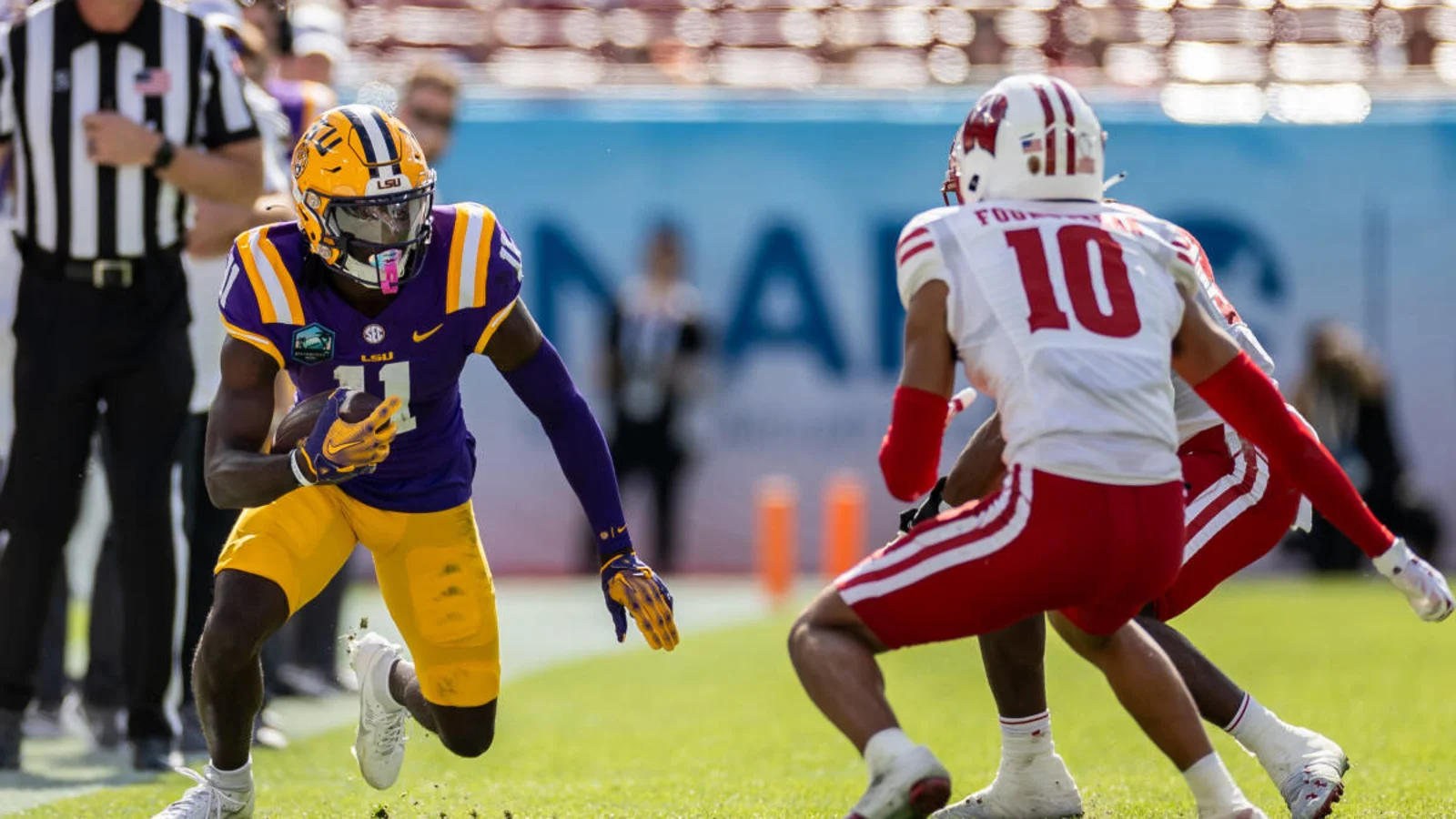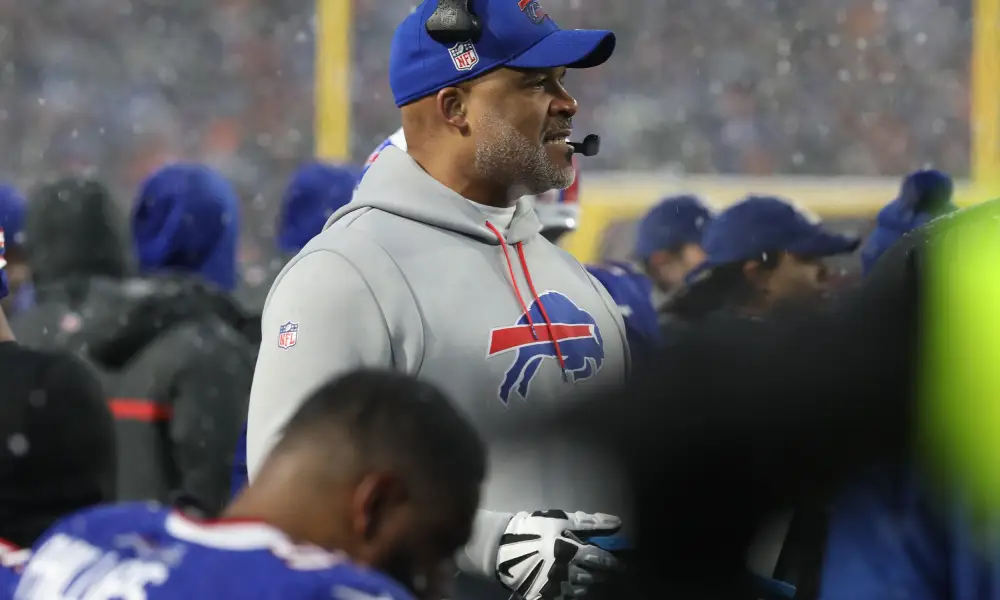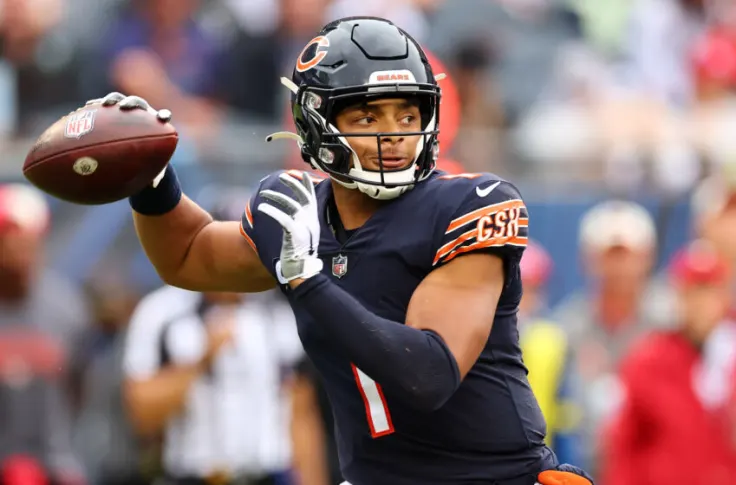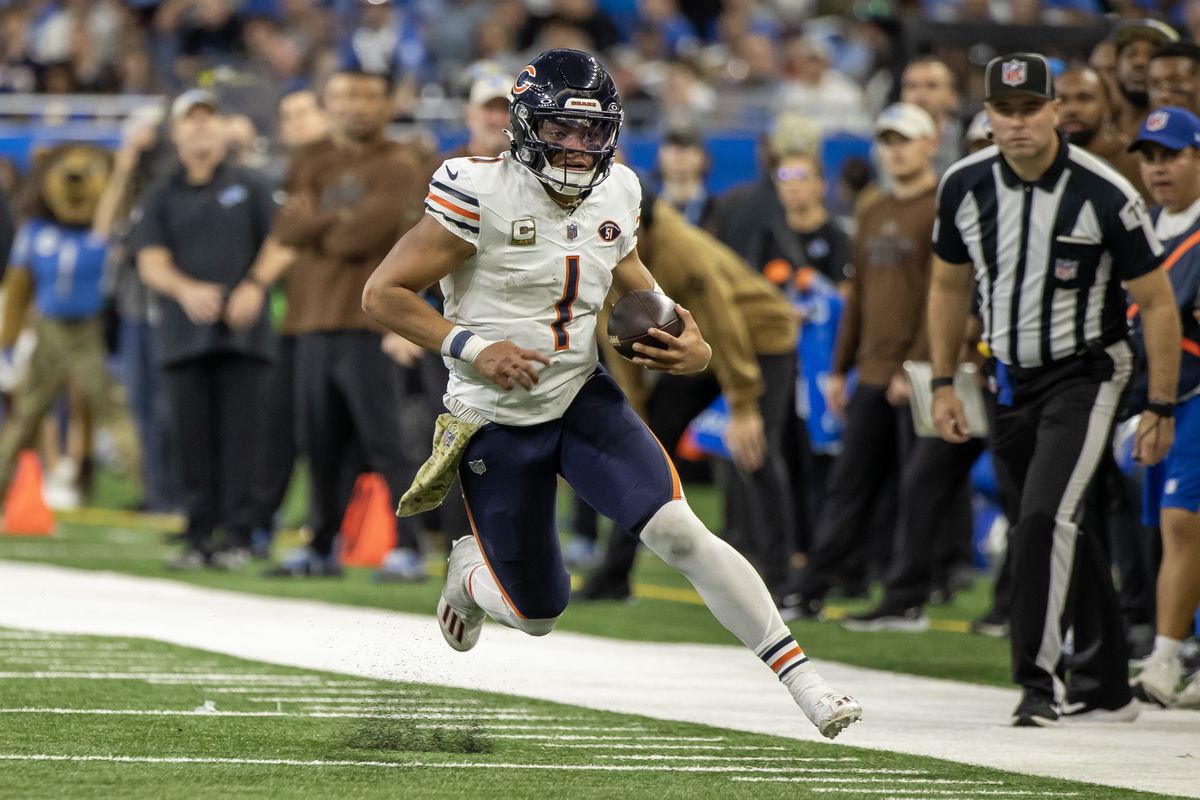
There appears little doubt the Bears will focus on quarterback with the No. 1 pick in the draft, whether it’s by taking Caleb Williams or trading that pick and keeping Justin Fields in place.
Either way, the decision is sure to split the Bears crowd based on the large number of supporters Fields has among fans, players and media and also the number of people who see this as an ideal time to move on at quarterback. Williams’ brilliance and the salary cap ramifications of keeping Fields are the reasons for this.
Whatever direction they go at quarterback with the first pick, their next pick must then be focused on a wide receiver.
Sure, they need pass rush help still and now they need a safety, besides needing a center. They can get those in free agency.
The receiver is more essential for the draft. In fact, it might even be more important than getting a quarterback because they know their baseline at that position is Fields again. At receiver, they’re barren after DJ Moore.
Now, it’s possible they would keep Fields and then trade down.
Unless they’ve dealt down with Washington or New England, they’re not getting the draft’s top receiver, Marvin Harrison Jr. And if they wanted to have one of the other top three QBs in the draft, they’re not taking Harrison with that second or third pick of the draft.
So the likelihood is Harrison will be out of their reach unless they do the unthinkable and simply draft Harrison No. 1. This would be unthinkable because if this was the player they have ranked first on their draft board then they could simply collect some sort of draft compensation for the first pick by moving down one spot before picking Harrison at No. 2.
So the ninth pick of Round 1 must be a receiver for the Bears and there’s no amount of certainty they’ll actually get to draft one of the other two top receivers, Washington’s Rome Odunze and LSU’s Malik Nabers.
They still need to make sure they get a Round 1 receiver at No. 9 and here’s why.
1. DJ Moore Solo Act
When Moore is getting 136 targets and all six other wide receivers on the Bears roster last season combined for only 123, it obviously says little for their other receiver threats.
Cole Kmet got 90 targets, which is fine, but when the tight end is getting targeted so many times it’s not necessarily good because the tight end doesn’t run deeper routes. The Bears were only 20th in the league in passing gains of 20 yards or longer and it’s because they need another wide receiver to open up the secondary, so to speak.
Moore and the threat of a tight end catching it 8 or 9 yards downfield isn’t going to do this.
It’s reflected in their NFL NextGen Stats yards of separation on catches or incompletions. Moore isn’t even in the top 75 in the league. Darnell Mooney had more average separation at 3.2 yards (46th) than Moore (2.7) at 76th. If the top receiver isn’t close to the separation of their No. 2 receiver and the No. 2 receiver has 65 fewer catches, then the offense is bogging down. This is especially the case in today’s NFL, when most teams have three receivers consistently capable of big plays.
The danger with Moore being targeted so often, of course, is they become too predictable. Defenses focus entirely on Moore, making for even shorter and shorter amounts of separation.
It’s a good thing for Moore that he is excellent at contested catches but there are even limitations with someone so talented if they are being shut off by two or more defenders.
2. Past Receiver Failure
It’s not really known whether GM Ryan Poles has an eye for receivers because he has only chosen two and neither one were smashing successes as rookies. Velus Jones Jr. could be getting his last shot this year. Tyler Scott displayed some talent but too many drops and not enough receptions as a rookie keep him from being considered a successful pick.
What is certain is former GM Ryan Pace did not have much success. He did land Mooney but Mooney struggled last year and he is the best Bears draft pick at the position since Phil Emery was their GM.
Second-round pick Anthony Miller showed up great his rookie year and was around 50 catches for his next two seasons but then fizzled out thanks to an inability to keep his composure. No other receiver the Bears have drafted in the last decade has even approached Miller and Mooney.
Riley Ridley, Dazz Newsome, Javon Wims, Daniel Braverman, Marquess Wilson and the ultimate draft bust, Kevin White, all disappointed. White was the seventh pick of the draft and had 28 receptions between 2015, when he was picked, and 2022. He had 25 of those for the Bears. Usually you should expect more than 22 receptions from the seventh pick of the draft. His injury issues early ended in plenty of time for him to become successful as an NFL receiver and he didn’t even get close to average.
Other than to embarrass Pace further for such an unwise draft pick–a junior college transfer who had played in a program not particularly known for passing (West Virginia)–the reason for bringing up past receiver failure is important: When you bomb out on receiver picks, you’re importing receivers in free agency or by trade.
The Bears traded to get Brandon Marshall. Phil Emery drafted Alshon Jeffery, a good pick in Round 2, but that’s 11 years ago. Allen Robinson came in as a free agent and cost plenty of cap space. They had to spend salary cap money or draft picks to get receiver help. They need impactful wide receivers who are on the first five years or four years of a contract so they’re getting production at bargain rates.
Wasting the early picks on poor receivers only means you’re relying on someone else’s successful receiver pick to come in and clean up your mess. That costs a good deal of cap money.
3. First Round Abundance
It’s always possible to come away with some sort of late-round steal, but if you want an impact receiver it’s usually going to need to come in Round 1 or early Round 2.
Sure, there’s the occasional Mooney or Puka Nacua, who fall through cracks to Round 5. It’s rare.
Yes, there’s the chance the Bears could come up with a real receiver ace in Round 2.
Uh, that is, if they had a Round 2 pick.
Round 3 is when they pick after the ninth pick of this draft, No. 75 overall, and wide receivers in Round 3 or later don’t have a great percentage of success in the modern NFL.
In the last draft, six out of the eight first- or second-round receivers had at least 43 rookie catches but there were only four out of 25 chosen after that who did this. This kind of rate is similar throughout other drafts. In 2022 it was only one receiver taken after Round 2 who averaged 43 catches and in 2021 only three of the receivers taken after Round 2 have averaged 43 catches.
The earlier they make the picks, the more likely the success with receivers as long as they avoid risky credentials like White had in 2015.
4. The 2024 Cutoff
The tier of top level talent at receiver is perceived to be three players, but there are other first-round potentials who might also make impacts. They’re in the next level of receivers.
After Harrison, Odunze and Nabers, there is a slight drop in most draft analysis but Brian Thomas Jr. of LSU, Oregon’s Troy Franklin and Florida State’s Keon Coleman are also viewed a potential first-round material.
The Bears obviously wouldn’t need to use the ninth pick on any of those three if they miss out on getting a shot at the top three receivers.
So they could trade back in Round 1 and get an extra pick or picks while also landing a receiver viewed as first-round material.
5. The Veteran Sack Fountain
Pass rush is the next greatest Bears need after receiver but it’s possible to come up with an edge rusher who contributes immediately at a reasonable cost in free agency—especially if they’re edge pass rush specialists in a rotation.
In the draft, there’s no guarantee of immediate production among top pass rushers.
Usually they need a year or more to develop and even then pass rush pressure is hard to come by.
There were six players drafted last year who made more than six sacks as rookies but none with more than nine. There were five players in 2022 who have averaged six in their first two years, three who averaged six or mover over their first three seasons and were drafted in 2021. Only one averaged six sacks or more over four seasons and was drafted in 2020. The 2019 draft was the one for pass rushers with seven players who have averaged at least six sacks a season, but that’s one draft in five years.
When edge rushers who can get seven to 10 sacks rotating in as part of a rush and are readily available for anywhere from $6 million to $12 million on shorter-term contracts, what’s the point of drafting your No. 2 pass rusher?
It’s smarter and easier to take the wide receiver.



Be the first to comment